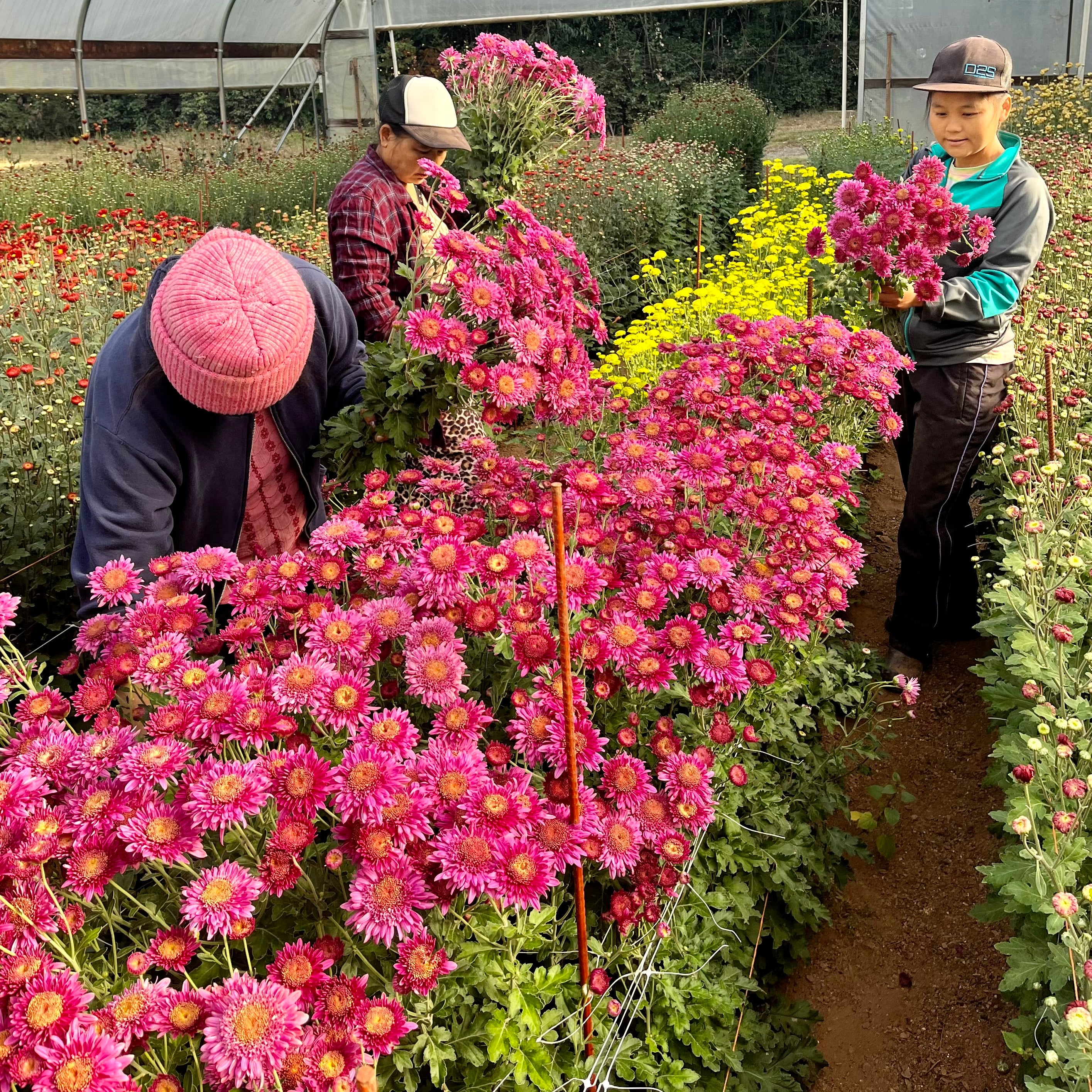
Spring Planning 10/28/22
Posted on
The first of Spring’s flowers are beginning their journey here. The tunnels are starting to get planted with ranunculus and anemones. It’s a long process to getting the space ready so that the beds are perfectly shaped, weeded, and amended. We often steam the beds to eliminate soil borne diseases and nematode pressure. It’s quite laborious and time consuming, but pathogens build up quickly in soil in tunnels and there is no other good organic solution to eliminating them.
Conventional farms use synthetic chemicals to kill pathogens in the soil. They can be pretty nasty. For instance Methyl bromide is a broad-spectrum fumigant that was widely used to control insect, pathogen, nematode, weed and rodent pests in strawberries. We grew up eating fruit that was grown in soils saturated in it, but it was so toxic that over 140 nations agreed to ban it’s use by 2005. It has been replaced by a variety of other chemicals that I still don’t want to eat.
Helpful tip: If you ever go to a U-Pick strawberry farm that grows strawberries in the exact same spot from year to year, you know that they saturate or fumigate the soil with something toxic. Organically grown strawberries need to move locations every year to outrun fungal pathogens that build up in the soil. If they are grown in the same spot for a second consecutive year, their yield will diminish significantly due to stress from the fungus in the soil. If you rotate on a 3 year cycle though, you can outrun it and grow successful berries organically. That’s called “crop rotation” and you hear sustainable growers talking about it often. Good to know for successful berry growth in your garden as well as for discerning which farms you buy your berries from.
Cover crops and compost can help rejuvenate soil too, but soil in tunnels aren’t exposed to the cleansing process of rain and full sun that can help that rejuvenation, so they tend to build up all sorts of problems after the 3rd year of growing in them. Steaming is the only real solution we’ve found and its worked great for us.
We were tipped off by farmer friends up north who found old equipment near Canada and raved about the results. We finally bit the bullet and got this ancient rusty unit and I spent a year fixing all of its problems and finally got it working and am now blessed and cursed to have the exhausting task of running around with hundreds of pounds of trucker chains and massive hoses all day for weeks at a time. It’s not fun, but it works. And if you’re wondering why not use it in fields of strawberries, it’s because it would take forever, unless you had a super fancy unit that cost over 100k that could speed up the process, but it would be really hard to grow enough strawberries to cover that cost.
So, one tunnel is now blooming in beautiful mums. One is 3/4 full of brand new baby plants. One was just fully steamed. Three still have to be amended, shaped, steamed, composted, then planted. And one has been partially excavated to give us access to tree roots that were growing into the beds and exuding chemicals that kill any other plants growing nearby. It’s a competitive strategy some plants employ called allelopathy. We lost 2 years worth of poppies and ranunculus in that space and the problem was getting worse. We have to pry our way through the subsoil clay and topsoil to try and pull as many tiny roots out as we can, before remaking the beds and then burying them under 6” of new topsoil so our new plants aren’t harmed by the remaining tree exudates. After that, fingers crossed, we can plant new flowers in that space with success again.
We’ll be wrapping up our week with a company pumpkin carving session this afternoon, so we’re looking forward to having a laugh with the crew.
Fingers crossed for rain this Sunday and I hope you have a great weekend.
-Steve

quick links
contact us
135 Francis Hill Road
Comer, GA 30629
info@3porchfarm.com
